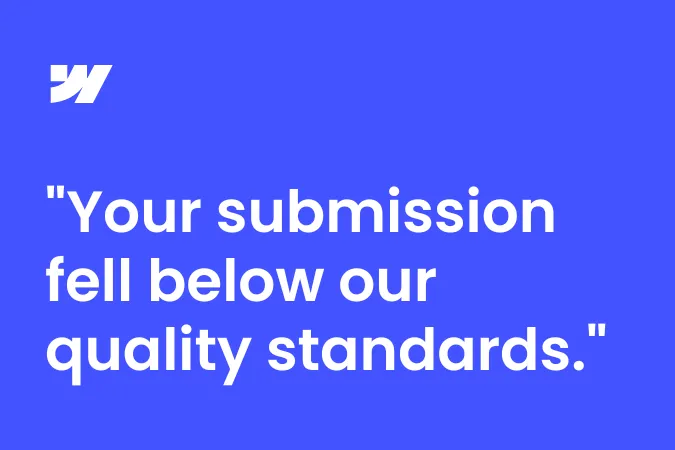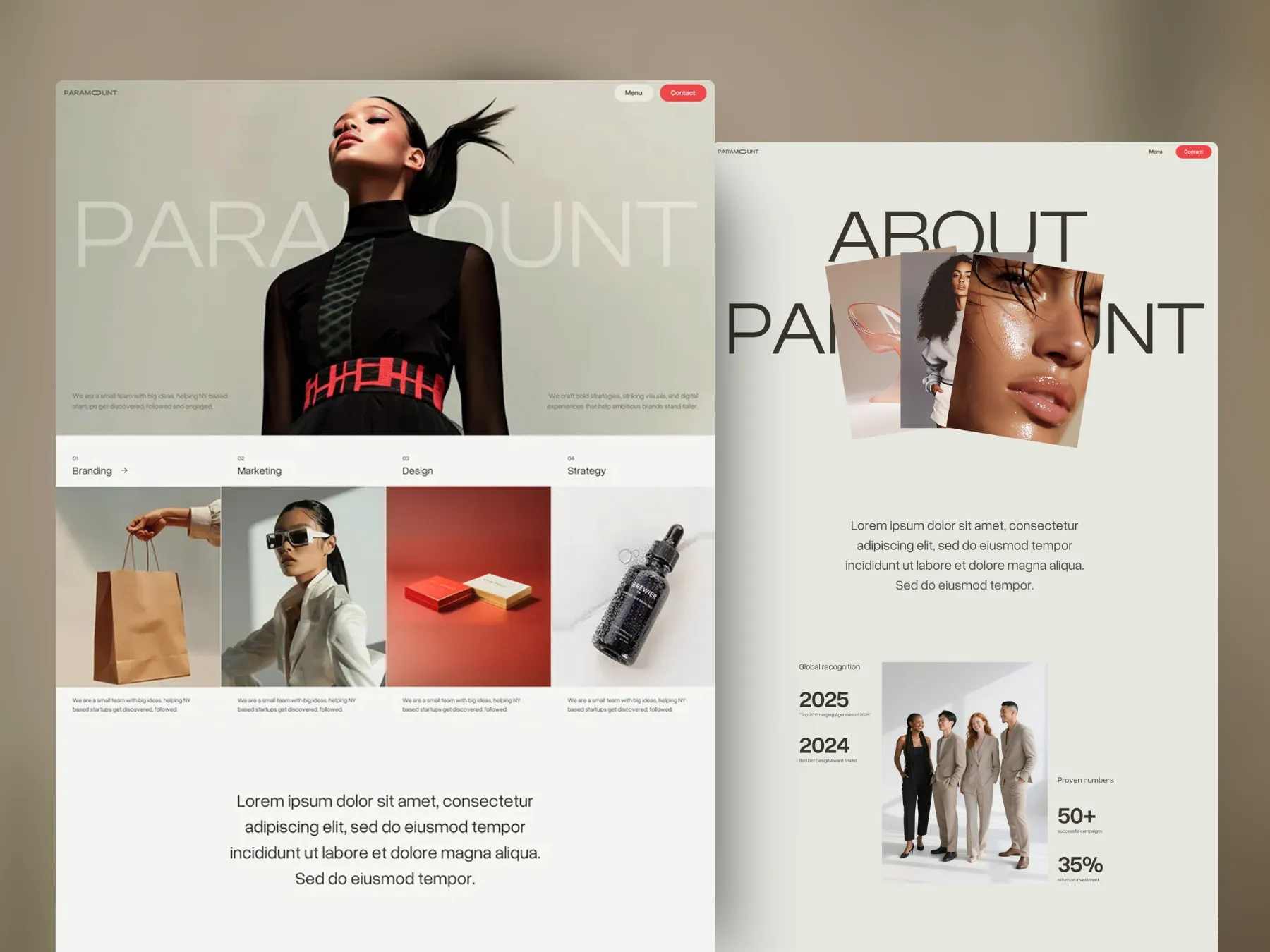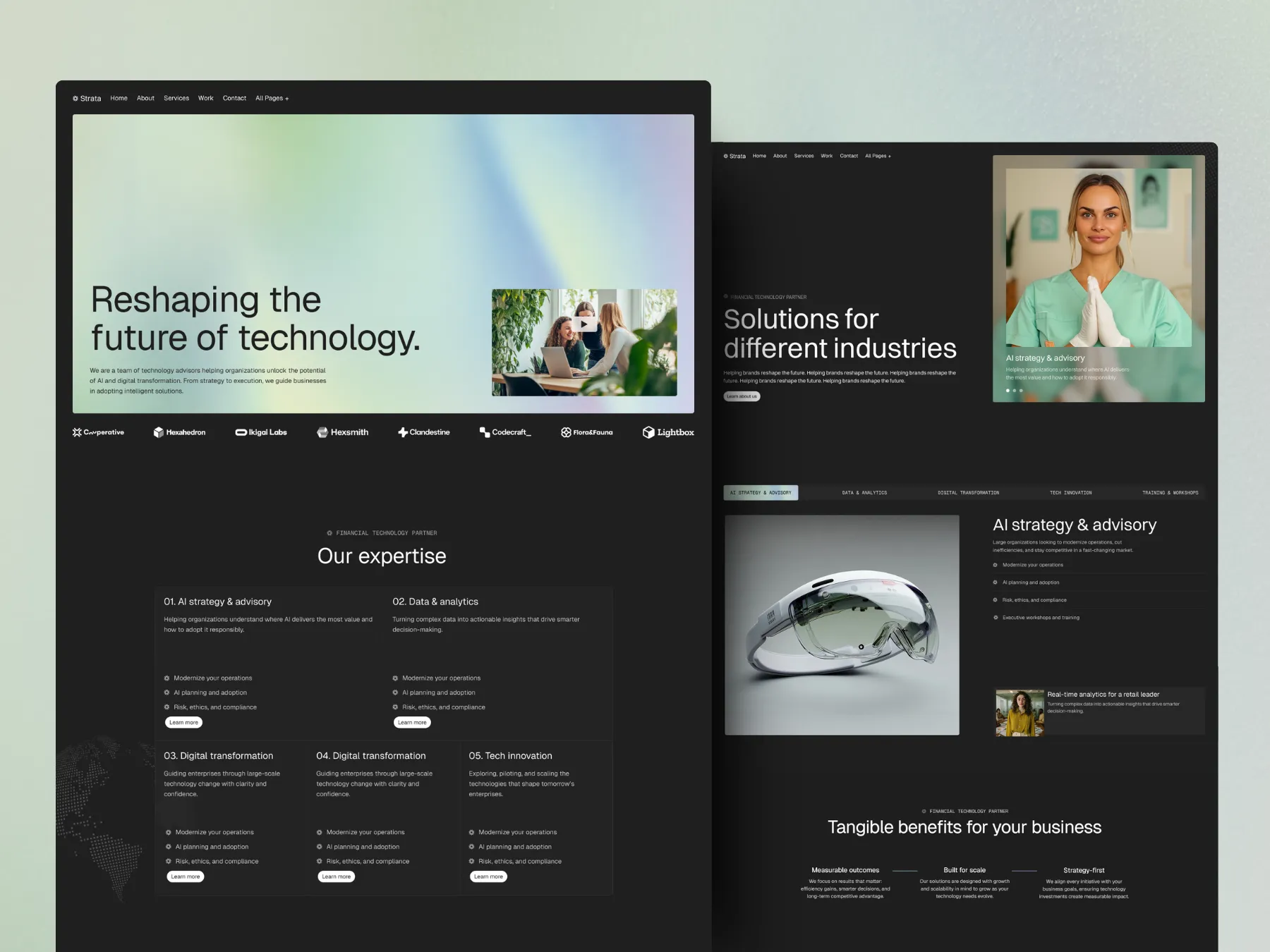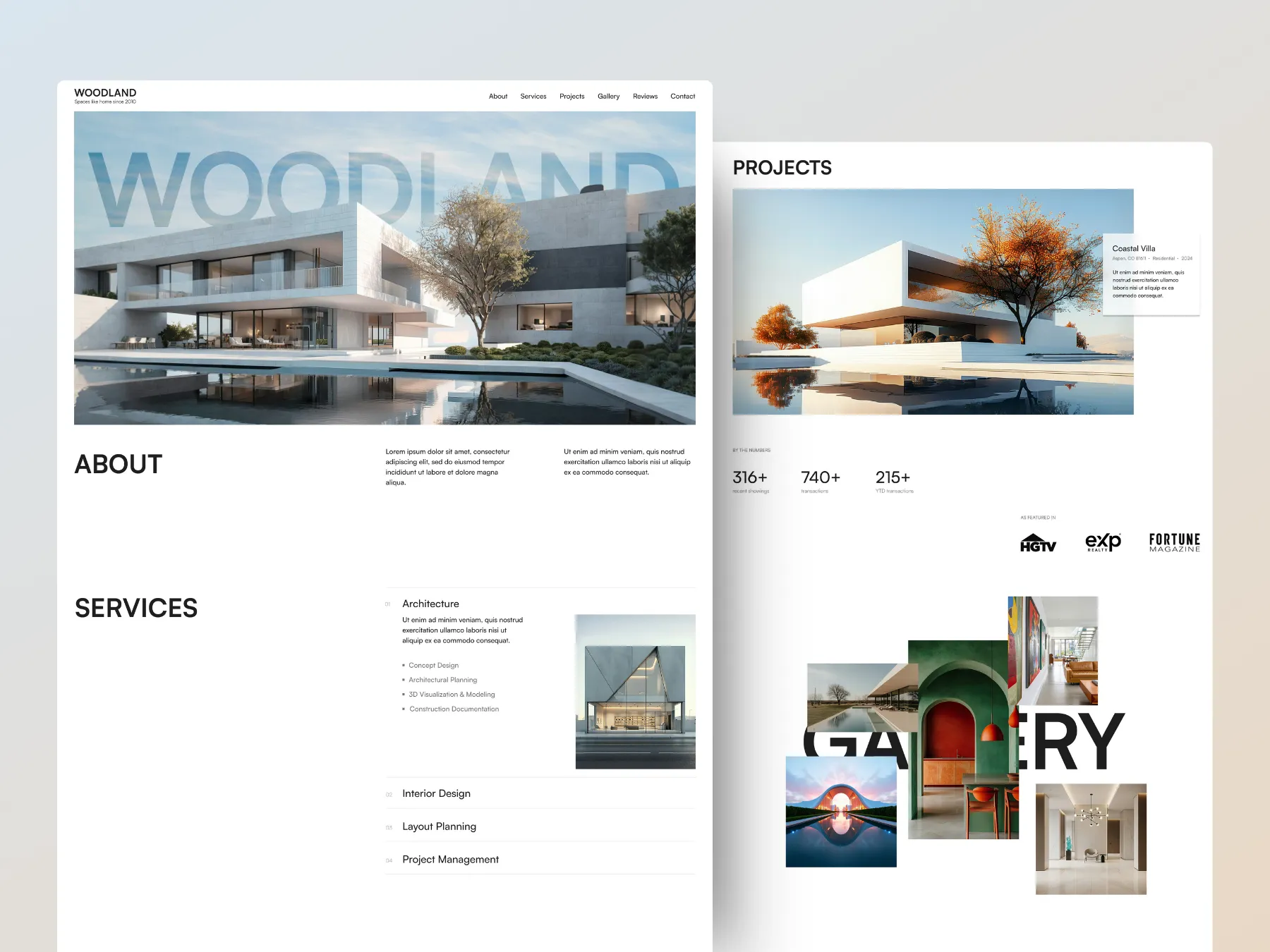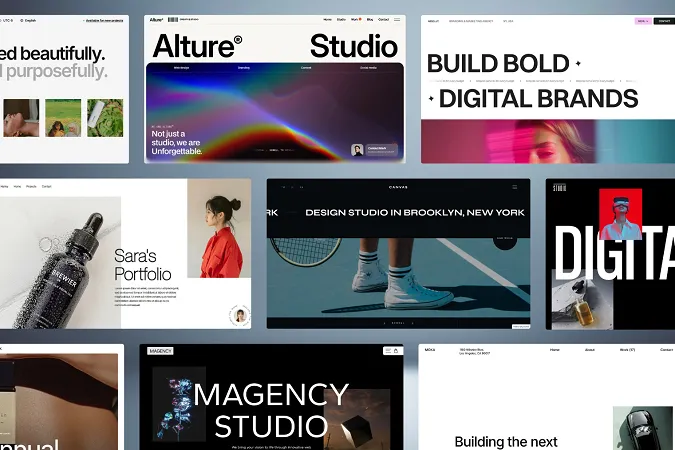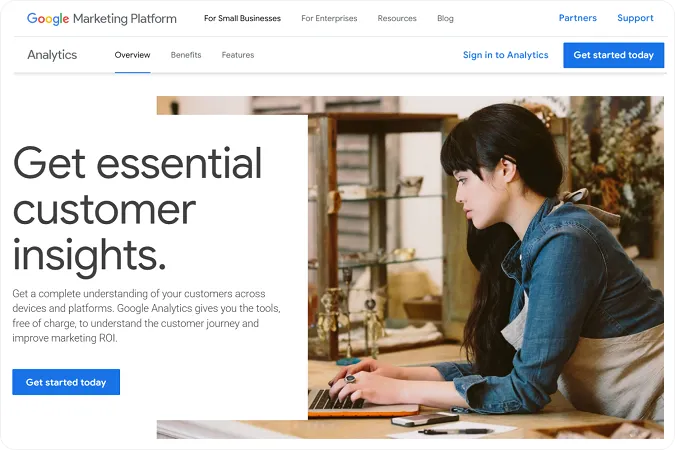[Note: This post was originally published in April 2025 and last updated in November 2025]
Over the past year, I’ve received messages on LinkedIn and emails from designers, developers, and even entrepreneurs who came across my templates and wanted to know more about the process or if it’s even worth it.
So that’s what this post is about.
Unlike other blog posts I’ve seen on the topic, this isn’t a full-blown guide to becoming a Webflow template creator. I won’t be walking you through the application process or how to submit your first template (we’ll save that for another day). Instead, I want to talk about the part most people are really curious about:
- Is it financially worth it?
- What are the common misconceptions?
- And what should you actually consider before jumping in?
If you’ve been thinking about designing and selling Webflow templates, especially now that the space is more competitive than ever, I hope this gives you some honest perspective before you dive in.
Quick heads-up before we get into it:
I’m not a full-time Webflow template creator and this isn’t my main income stream right now. So naturally, the time and energy I’ve put into it reflect that, and the results I’ve seen probably will too. If someone goes into it full-time, they’ll likely have a different experience.
Also, just to clarify: I’m not a Webflow affiliate or partner. Everything in this post is based purely on my own experience.
Why you may be considering selling Webflow templates
Maybe you’ve been designing client websites for a while and you’re craving more creative freedom. Or maybe you’re tired of the feast-or-famine cycle of freelance work and looking for a more sustainable income stream.
You’ve probably seen other designers talk about selling templates as a form of passive income and the idea sounds tempting. Create once, sell multiple times. No client meetings, no endless revisions, just pure design work (and a bit of marketing, of course).
Or perhaps you’ve browsed the Webflow Marketplace and thought, "Hey, I could do this."
If that sounds like you, you’re not alone. That’s exactly where I was in 2024.
How much money can you make from selling Webflow templates?
When my first Webflow template was published in May 2024, I had this image in my head: it would get approved, go live, and boom! Sales would start rolling in instantly. I was literally checking my phone every other minute the day after it went live, expecting to see that first sale notification.
Spoiler alert: that did not happen.
The first few days were quiet. It took time for people to discover the template. But eventually, sales did start coming in, and more importantly, they haven’t stopped since. In fact, my first template: PursePulse, was my best-selling template by far until July 2025, when it was overtaken by a new one: ImagenAI.
Now, I know people usually want to see the numbers, so here they are:
First year performance (May 2024 to May 2025):
- I published 11 Webflow templates.
- I sold 138 templates.
- In total, I made around $4,800 over 12 months.
Second year performance so far (June 2025 to November 2025):
- I published 5 new Webflow templates.
- I sold 128 templates.
- In total, I made around $7,600 USD over 6 months.
So, I made nearly twice as much in the past 6 months as I did in my entire first year. The numbers really drove home what I’d started to suspect: selling templates is a long game, and momentum builds the longer you stick with it. Each new template adds another stream of potential sales, but even more importantly, older ones keep compounding over time.
What changed over the past 6 months wasn’t just that I published new templates, it was also the shifts I made in how I design, position, and market them. Those lessons have made a huge difference, and I’ll break them down later in this post.
Unexpected benefits of selling Webflow templates
The revenue from template sales is the most obvious benefit of selling Webflow templates but what surprised me were the side benefits I didn’t see coming:
- A surprising number of people reach out to me every day on LinkedIn or by email after discovering my templates online or on the Webflow Marketplace.
- And not just to buy templates! Some want help customizing them for their brands, while others ask about fully custom websites. I’ve gotten several client projects this way, with my templates acting as my portfolio.
- I’ve seen a noticeable increase in traffic to my website, blog, and newsletter.
- I’ve seen real growth in my personal brand, especially on LinkedIn, just from consistently sharing what I’m working on.
The 2 biggest misconceptions about selling Webflow templates
1. “Webflow templates are passive income.”
People have really taken the term "passive income" and run with it.
Yes, templates can become a form of passive income over time but only after a lot of upfront (and ongoing) work. Not only does creating a good template take time, getting it approved and published on the Webflow Marketplace also comes with its own learning curve.
And here’s the part that doesn’t get talked about enough: The days of “it will sell itself once it’s published” are long gone.
With over 7,000 templates and 300+ approved creators (some of which are full-time agencies) getting your template discovered especially as an independent creator is a much bigger challenge than it used to be.
Solely counting on organic discovery within the Webflow Marketplace is not a good strategy. I made this mistake early on, and if I could go back, I’d absolutely do things differently. You need to actively market your templates and not just once.
You should be showing up on platforms where your potential customers hang out (LinkedIn, X, Reddit, Dribbble, and wherever else your audience might be). If you don’t, it’s very unlikely you’ll see good results.
Over the past year, I’ve been consistently posting on LinkedIn, and while it took time to build an audience, that audience now drives traffic to my templates every time I launch something new. My blog helps too, since it cross-links to my templates, and my newsletter which I started in July has already become another way to get eyes on my templates as soon as they’re published.
So, all this seems to have worked for sure, but again, there’s nothing “passive” about it.
2. “If the design is good, it’s bound to sell.”
This is a big one. And unfortunately… it’s just not true. Being a good designer definitely helps but it’s far from the only thing that matters when it comes to template sales.
One of the biggest factors is the niche you pick. Templates that are built for a specific, timely, and in-demand use case almost always perform better than generic “business” templates. A few years ago, crypto and NFT templates were all the rage. Right now, AI and SaaS templates are doing pretty well. Startup, agency and portfolio templates seem to be evergreen categories which also makes them highly competitive. The trends will change and you’ll need to evolve with them. The more clearly your template solves a current problem for a specific audience, the better chance it has of selling.
Finally, timing and discoverability matter more than most people realize. Getting a head start on an emerging trend (like AI landing pages early on) or releasing templates during periods when businesses are planning new launches (like Q1 or mid-year) can make a big difference. Launching at the right time and being early in a niche can give you an edge, even if you’re not the “best” designer in the room.
A few key facts
1. Webflow takes a 5% commission on all template sales
This used to be 20% but, in October 2025, Webflow reduced their commission to 5% (Yaayyy!). This means if you sell a $99 template, you’ll get around $94 after the commission. Keep this in mind when you’re calculating pricing and potential earnings.
2. You have limited control over your template pricing
This is something many new creators don’t realize: you don’t get to freely set your own price for a Webflow template.
Until March 2025, Webflow set the final price of every template based solely on the number of pages and whether CMS or Ecommerce functionality was included, not the design quality, demand, or niche. But in April 2025, Webflow rolled out a new flexible pricing model. Now, when you submit a template, you’ll get to choose from 2–3 pre-set price points based on the template’s size and whether it includes CMS features.
For example:
- A single-page template can be set at $29 or $39
- A multi-page template (without CMS) can go for $39 or $49
- A multi-page template (with CMS) can go for $59, $79, or $99
This gives you some say in how your work is valued but it’s still not full control. You can’t type in a custom price (like $45) or change it after the template goes live. Also worth noting: Ecommerce features no longer influence pricing. Webflow says it made this change because many template buyers weren’t actually using the ecommerce functionality included.
3. Creating templates for Webflow is NOT FREE!
This one caught me off guard because no one seems to talk about it. Webflow lets you host templates for review on their .webflow.io subdomains but you can only publish 2 active staging sites at a time under a free Workspace. To publish more than 2 templates, you’ll need to upgrade to a paid Workspace plan, (starting at $16/mo as of September 2025) which is something to budget for if you’re planning to go all-in on template creation.
That said, Webflow has shared with creators that this is something they’re working on, and that they don’t want this limit to be a blocker for template submissions but as of now, no action has been taken, so the limit still stands.
What you MUST know about selling Webflow templates in 2025
1. Publishing your template isn’t the finish line; it’s the starting point
Not to beat this one to death, but it really can’t be emphasized enough: getting your template approved and published on the Webflow Marketplace is just step one. I made the mistake of thinking that once it was live, sales would naturally roll in.
In reality, you need to treat each template like a product launch: share behind-the-scenes content, create anticipation, promote it across platforms like LinkedIn, X, and wherever you are active and have an audience, and keep reminding your audience it exists. Discovery is harder now, and creators who show up consistently are the ones who stand out.
2. Be smart about the type of templates you create
Early on, I created a bunch of $29 single-page templates thinking the low price would drive high volume. But what I ended up doing was undervaluing the effort that goes into creating a solid landing page.
We all know the homepage or landing page takes a disproportionate amount of time and thought compared to the rest of a website so pricing it low just didn’t make sense. If I could do it again, I’d repackage those into CMS or multi-layout templates, where you can justify a higher price point and get better margins.
3. The way your template looks and reads matters a lot!
It’s not just about good design, it’s about presentation. Templates that are visually striking and clearly positioned for a niche perform better, both in getting approved and in sales. Thumbnails, naming, and preview content make a huge difference.
Even if the structure is solid, if the thumbnail doesn’t pop or the copy feels vague, people will scroll right past it. Think of your template thumbnail as the “hook” you’d use on a social media post.
4. Templates need "pizzazz", not just clean structure
You might think, “A good template should be generic enough to suit a variety of businesses and easy to customize,” and while that’s true to some extent, it’s not enough anymore. The current Webflow Marketplace is competitive and bland doesn’t cut it.
Templates need visual flair, polished typography, interactions, color choices, layout creativity... something that grabs attention. Generic, minimal layouts that prioritize flexibility over style often don’t get approved, and even if they do, they struggle to sell.
I’ve seen this firsthand: my best-selling templates all have that extra layer of polish, personality and interactiveness. ImagenAI, Absolute and Niko are all great examples. Each of them has enough style to grab attention in the marketplace. That’s what gets people to click, preview, and eventually buy.
5. Not every great design gets accepted, and that’s okay
One thing I didn’t fully expect going in was how much subjectivity can come into play during the review process. A design you feel really confident about might not get accepted on the first try and sometimes, the reasons aren’t always immediately clear.
To be fair, Webflow provides detailed guidelines to help creators prepare for submission, and the bar for quality has definitely risen over time. But like any review process, human judgment is involved, and that means interpretations can vary slightly between reviewers.
This isn’t unique to me. Many creators have shared similar experiences. I’ve had templates rejected the first time around. You can read more about that here. I ended up overhauling those designs, and they were accepted after resubmitting. It was frustrating in the moment, but also incredibly helpful for leveling up my future templates.
My advice? Don’t take it personally, and don’t let one rejection stop you. Instead, spend time looking at the "Featured" templates on the Webflow Marketplace. These are a great indicator of what the team is currently prioritizing, both in terms of design style and niche focus. Use those as a benchmark when evaluating your own submissions.
So, is selling Webflow templates a good side income/passive income stream in 2025?
After 1.5 years of creating and selling Webflow templates, here’s my honest take:
Yes, it is worth it, and here's why:
- Templates become assets that keep earning long after they’re published - I like this because it aligns with my goal of building a more passive business over time, where I’m not constantly chasing every penny I make.
- You can attract client leads and customization requests through your templates.
- Creating templates helps you grow your visibility, personal brand, and authority.
- Webflow’s status as the “no-code” leader in the website builder space is still going strong (although Framer has emerged as a worthy competitor) so the demand for Webflow templates is definitely there.
- Webflow is actively listening to creators and working with them to improve the platform so you’ll become part of a collaborative ecosystem.
But you need to keep these in mind:
- You have to actively market your work - don’t rely on the Marketplace alone.
- Results take time - it’s definitely not passive or instant.
- Webflow is becoming stricter and more selective about which creators and templates it approves and getting in is harder than it used to be.
- There are over 7,000 templates published on the marketplace as of September 2025 so expect serious competition.
- You’ll likely need a paid Workspace if you're planning to publish more than 2 templates at a time, since the free plan limits how many .webflow.io sites you can have live.
- Some templates will flop and rejections will happen, and that’s part of the process.
- Smaller templates have lower profit margins and might not be worth the effort.

